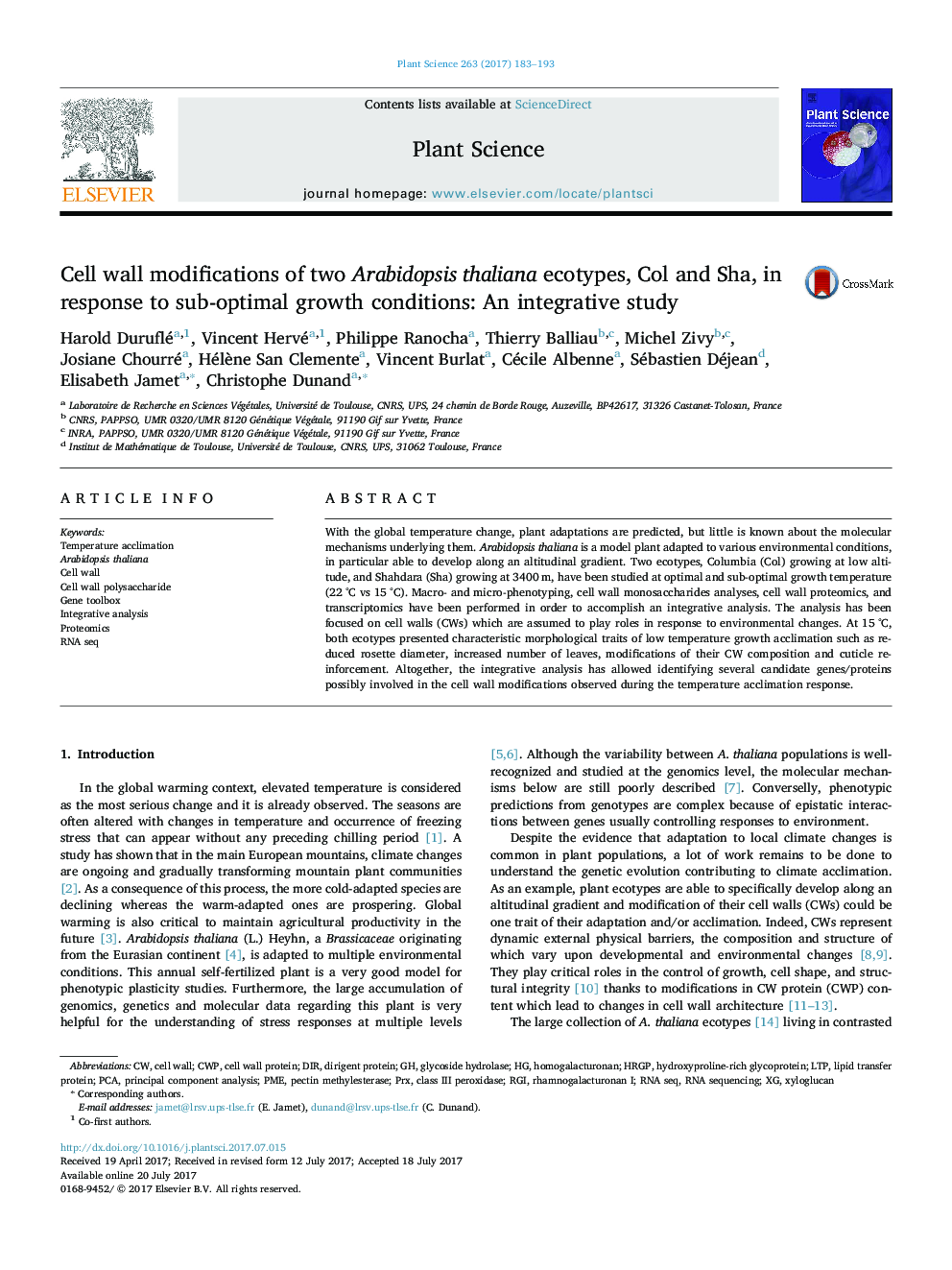| Article ID | Journal | Published Year | Pages | File Type |
|---|---|---|---|---|
| 5515771 | Plant Science | 2017 | 11 Pages |
â¢Col0 and Sha Arabidopsis ecotypes respond differently to sub-optimal growth conditions.â¢An integrative analysis identifies candidate genes possibly involved in temperature acclimation.â¢The cell wall is a major player in temperature acclimation.â¢A greater phenotypic plasticity is observed for the Col than for the Sha ecotype.
With the global temperature change, plant adaptations are predicted, but little is known about the molecular mechanisms underlying them. Arabidopsis thaliana is a model plant adapted to various environmental conditions, in particular able to develop along an altitudinal gradient. Two ecotypes, Columbia (Col) growing at low altitude, and Shahdara (Sha) growing at 3400 m, have been studied at optimal and sub-optimal growth temperature (22 °C vs 15 °C). Macro- and micro-phenotyping, cell wall monosaccharides analyses, cell wall proteomics, and transcriptomics have been performed in order to accomplish an integrative analysis. The analysis has been focused on cell walls (CWs) which are assumed to play roles in response to environmental changes. At 15 °C, both ecotypes presented characteristic morphological traits of low temperature growth acclimation such as reduced rosette diameter, increased number of leaves, modifications of their CW composition and cuticle reinforcement. Altogether, the integrative analysis has allowed identifying several candidate genes/proteins possibly involved in the cell wall modifications observed during the temperature acclimation response.
Graphical abstractDownload high-res image (164KB)Download full-size image
